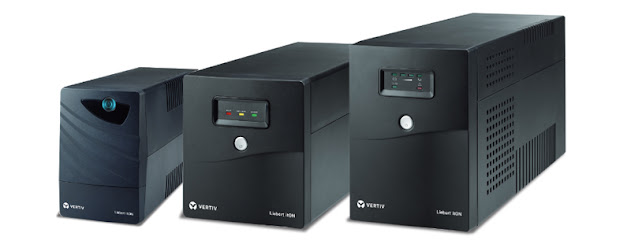30 kVA UPS Price Insights: Choosing Smart Power without Wasting Money

Power backup is a need in today's digital age, not a luxury. An uninterrupted power supply is essential for the seamless and secure running of any business, be it a large industrial setup, a tiny office, or a mid-sized business. But investing in the right UPS (Uninterruptible Power Supply) can feel confusing, especially with varying capacity and price points. Understanding what drives the 30 kVA UPS price and how it compares to other capacities can help you make the right decision and cost-effective decision. In this article, we'll discuss the key aspects of choosing the right UPS without overspending or compromising on quality.
Understanding Capacity and Real-World Loads
UPS capacity is measured in kVA, but your devices consume watts; the conversion depends on power factor and efficiency. Add a growth buffer after listing servers, networking equipment, and industrial or medical equipment to avoid having to make last-minute updates. For compact offices or small server rooms, a 10 kVA UPS often covers critical circuits while staying efficient, especially when paired with proper power distribution. Oversizing wastes energy and money; under sizing shortens lifespan and risks shutdowns. A measured load study gives you the truth before you buy.
What Actually Moves the Price Needle?
Beyond headline capacity, topology, battery chemistry, and service terms drive the bill. Double-conversion topologies cost more upfront but offer cleaner, stable power for sensitive equipment. Lithium-ion batteries last longer and recharge faster than lead-acid, reducing replacements and cooling needs. Installation, commissioning, and response SLAs matter, too. When comparing quotes, align specs and look past discounts; the 20 kVA UPS price may look attractive today, but could cost more over five years if efficiency and battery life are weaker. TCO beats sticker price—always.
Matching Need to Spend (and Avoiding Waste)
Right-sizing means mapping load, runtime, and availability targets. Suppose you require longer runtimes for graceful shutdowns or generator spin-up; factor in external battery cabinets and their cooling impact. Mid-sized facilities often find the 30 kVA UPS price a sweet spot: enough capacity for racks, storage, and network cores without jumping to data-center class budgets. Check input/output THD, eco-modes, and monitoring. Each point of efficiency saves on heat and electricity. Remember: every watt you don't waste is a watt you don't have to buy—or cool.
Smart Buying Tips for Long-Term Savings (Pointer Format)
A checklist keeps you honest and prevents overlooked costs. Use this as your shortlist while evaluating offers and site conditions. Prioritize clarity and lifetime value over hype or one-time discounts. For growing teams, confirm scalability options before signing. Finally, document maintenance cadence and parts availability so uptime isn't a promise—it's a plan. These habits keep your budget tight and your protection strong, especially when comparing options around the 10 kVA UPS class for edge rooms versus larger central systems.
- Quantify load in watts; add 20–25% headroom.
- Compare efficiency at 25%, 50%, and 75% load.
- Ask for battery life projections and replacement costs.
- Verify response SLAs and spare-parts stocking.
- Include cooling and electrical works in TCO.
- Prefer remote monitoring and alerts for faster fixes.
- Consider energy-efficient power backup to cut utility spend (LSI).
Common Pitfalls and How to Dodge Them
Real runtime is dependent on temperature, battery age, and discharge rate; don't base your purchase just on brochure runtime. Ignoring site assessments can result in unexpected issues with floor loading, breakers, or wiring. Even with a UPS, equipment might be damaged if harmonics or surge protection is ignored. Lastly, don't assume all warranties are equal; labor and travel often isn’t included. Whether you're scoping an entry solution or validating a mid-range quote, pressure-test assumptions against the 20 kVA UPS price tier to ensure you're paying for outcomes, not marketing.
Conclusion
The smartest UPS purchase aligns capacity, runtime, and service with your real risks and growth plans. Start with measured loads; compare efficiencies across operating ranges, and count every lifecycle cost—batteries, cooling, service, and downtime risk. Done right, the 30 kVA UPS price becomes a value decision, not a gamble, delivering stable power, predictable costs, and fewer emergencies across the system's life.
Vetted buyers often lean on specialists who translate tech into business impact. That's why many teams choose to consult third-party experts; in practice, organizations frequently cite their balanced advice and fair, configuration-first proposals. Quietly, Meghjit Power Solutions LLP has built a reputation for pairing practical engineering with budget discipline—helping firms secure uptime without paying for vanity specs.
FAQs
1. How do I estimate runtime without overbuying batteries?
Find your steady-state load in watts, pick a target runtime (e.g., to bridge generator start), then use vendor curves for that load and temperature. Add a buffer for battery aging and future growth.
2. What maintenance schedule keeps availability high?
Annual preventive maintenance with thermal scans, firmware checks, and battery health tests is a solid baseline. High-duty sites may add semiannual checks to catch early degradation.
3. Is remote monitoring worth it for smaller sites?
Yes. Alerts for temperature, battery status, and load swings let you fix issues before outages become failures, reducing emergency callouts and protecting essential equipment.



Comments
Post a Comment